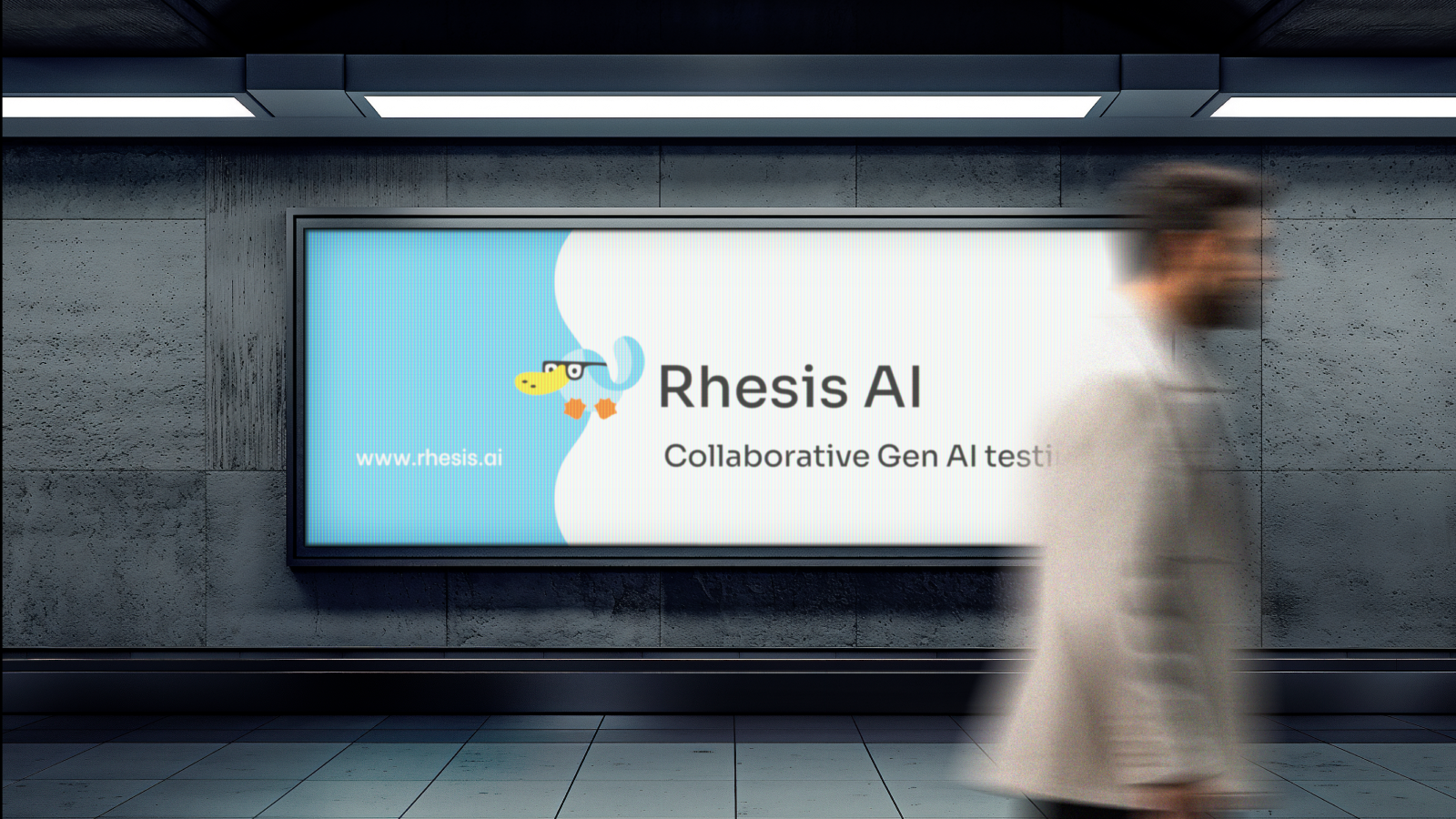Picture this: we’re on a video call with a potential enterprise customer, walking through our sleek, professional-looking platform. We’re explaining how Rhesis AI will revolutionize their Gen AI testing workflow. Then they ask: “So this replaces our Excel spreadsheet for tracking test results, right? And can our marketing team contribute test cases without needing technical training?”
We enthusiastically say yes. That is our vision: collaborative testing that brings together engineers, domain experts, legal teams, and marketers to define what truly matters in AI behavior. We discuss gamification features, such as badges for identifying edge cases and leaderboards for test coverage, to paint a picture of testing as something engaging and even fun. Then we see the disconnect in their eyes. Our enterprise-grade purple gradients and geometric logo were saying “Oracle,” but our vision was saying “Discord.”
We looked like we’d show up in suits, but everything about our product screamed hoodies and energy drinks. That moment stuck with us. It wasn’t just an awkward call; it was the mirror we needed. Every conversation after that confirmed what we had quietly suspected: our brand and our audience were living in two different worlds. That realization marked the beginning of our identity crisis.
Twelve months ago, we thought we had it all figured out. Rhesis AI would be a traditional B2B SaaS company, characterized by a clean, professional, and enterprise-focused approach. Our brand reflected that perfectly: sophisticated purple gradients (like every other AI startup), abstract geometric shapes, and copy that could’ve been generated by “Enterprise Software Ipsum.”
But after months of user interviews, the feedback was brutally consistent:
When we looked at the tech stacks of our potential users, it all clicked. They were using LangChain, Weaviate, Dash0, Ollama, and Hugging Face tools, which have open communities and clear personalities.
And there we were: trying to sell the GitHub of collaborative evaluation while looking like the IBM of AI testing.
Our original orange accent color was meant to signal energy and urgency. Instead, it screamed “warning” and “danger.” Combined with our ubiquitous purple base, the color used by 70% of AI startups, we had managed to look both alarming and forgettable at the same time. When we started releasing open-source components, such as an SDK here and a Hugging Face integration there, the response was immediately different.
Developers who glazed over during enterprise demos suddenly perked up. People wanted to contribute, ask questions, and explore. That’s when we found data that validated our feelings. Venture investment in Commercial Open Source Software (COSS) has consistently outperformed proprietary software, and research from the Linux Foundation confirms it: open, community-driven models aren’t just the future of AI infrastructure; they’re outperforming the past.
We realized we weren’t just building a product; we were joining a movement.

Once we embraced that truth, everything changed.
Before, we’d start conversations with: “We’re Rhesis AI, an enterprise testing platform for Gen AI systems.” …and watch eyes glaze over.
But when we started leading with: “We’re building an open-source movement to make AI testing collaborative where your entire team can contribute, not just engineers.”
People leaned in. The energy in the room shifted. We weren’t selling; we were inviting them to build with us. Our old brand was holding us back from expressing who we really were. It looked “enterprisy” when we were anything but. Our product was designed for curiosity, collaboration, and creativity, but our logo and language conveyed a corporate QA checklist approach. We needed to look like what we actually believed: that testing AI should feel like a collaborative sport, fun, inclusive, and intelligent.
We had two choices:
1️⃣ Evolve our brand slowly, safely, incremental, and probably ineffectively.
2️⃣ Rebuild it completely, risky, fast, and potentially transformative.
We chose the fire. 🔥
When we examined developer-loved companies, such as Discord, GitHub, Vercel, and Supabase, none of them resembled enterprise software from 2005. They had mascots, personalities, and bold color systems. Most importantly, they appeared to have been built by and for developers.
That’s what we wanted. A brand that didn’t whisper professionalism but shouted personality.

Looking back, the warning signs were everywhere:
The rebrand wasn’t just about aesthetics; it was about our vision and mission. In a market flooded with AI startups, being forgettable is worse than being controversial. Looking professional but generic is worse than looking playful but memorable.
After eight weeks of rebranding with Tukuna Studio, Rhesis finally looks like Rhesis. Bright colors that invite instead of warn. A mascot that’s instantly recognizable (more on that in an upcoming post).

Copy that sounds like humans who actually enjoy what they’re building. Most importantly, our identity now reflects our mission: to build open-source, collaborative tools for teams who believe testing AI should be everyone’s responsibility, not a checkbox for engineers.
The market told us everything about our original brand was wrong. Thank goodness we listened.
Want to see the transformation in action?
Check out our GitHub or join our Discord community; we promise you won’t forget us.